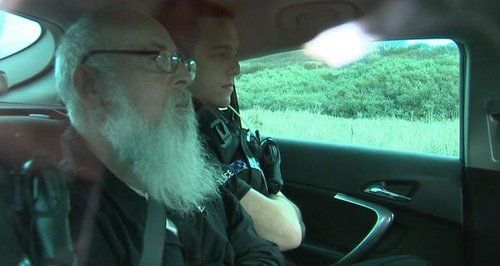Serial killer Angus Sinclair's reign of terror
11 March 2019, 12:22

The serial killer, rapist and paedophile Angus Sinclair spent more of his 73 years in jail than outside but the complete picture of his murderous reign of terror may never be fully revealed following his death.
He started his criminal career with the theft of a church collection box as a young boy growing up in Glasgow in the 1950s.
But he soon progressed to violence and by 1961 he committed his first killing by strangling seven-year-old Catherine Reehill when he was
just a teenager.
He pleaded guilty to culpable homicide and served six years behind bars.
Following his release, he went on a killing spree during the 1970s as well as carrying out violent sex attacks on 11 young children between
the ages of six and 14 - including three rapes.
He found himself before the courts in 1982 for the sex attacks and was given two life sentences.
Sinclair was refused parole in 1999, with the authorities stating he was too dangerous to be let back out on the streets, but the extent of his
murderous past had not yet been revealed.
Then in 2001, while still in prison, DNA advances led detectives to link him to an unsolved murder from 23 years previously.
He was tried, convicted and given another life sentence for the murder of Glasgow teenager Mary Gallacher who was raped and stabbed near a railway line in 1978 as she went to meet a friend.
The DNA breakthrough in the case saw police begin to examine any connection between Sinclair and several other unsolved murders from
the era.
However, it was the unsolved World's End murders that Sinclair would eventually be linked to thanks to scientific developments.
The brutal killings of Christine Eadie and Helen Scott was one of Scotland's highest-profile unsolved crimes for almost four decades.
The discovery of the girls' bodies on October 16 1977, dumped in remote locations in East Lothian around five miles apart from each other,
conveyed the unimaginable horror they suffered at the end of their all-too-short lives.
Christine's naked body was found at around 2.25pm that day at Gosford Bay, Aberlady. She had a ligature around her neck, her mouth was
gagged with a pair of pants and her wrists had been tied behind her back.
She had been punched and kicked on her head and body, bitten, raped, bound and strangled.
Helen's partially-clothed body, discovered at around 6pm, had been dumped in a wheat field at the Huntington to Coates road, near
Haddington.
Her hands were also tied behind her back and a ligature made from a belt and a pair of tights had been tied around her neck.
Raped, bound and throttled, she too had been punched and kicked, and her head had been stamped on.
Sinclair first faced trial for the horrific murders in 2007 but the case collapsed and he was sent back to jail before it ever reached a jury for a verdict.
The outcry was such that it led to the introduction of double jeopardy legislation in Scotland, meaning suspects could face retrial for serious crimes if "compelling new evidence" emerged.
Sitting in the dock again seven years later, Sinclair listened as forensic scientists revealed how new techniques uncovered his DNA, and that
of his brother-in-law Gordon Hamilton, which had lay hidden inside knots on the ligatures used to strangle the girls.
Science, as the prosecution put it, had given Christine and Helen a voice.
With Hamilton dying in 1996, Sinclair had the opportunity during the five-week trial two years ago at the High Court in Livingston to claim
"Gordon did it all".
Entering the witness box on day 21 of evidence, he did just that.
During questioning from the Lord Advocate Frank Mulholland, who prosecuted the case, he was asked on several occasions to "look into his
soul" and admit responsibility for raping and murdering the girls.
His answer every time was simply "no".
He sat in the dock yawning, dozing and occasionally removing his glasses to rub his eyes.
In a dramatic courtroom exchange, Sinclair said he had consensual sex with both girls in the back of his caravanette in the Holyrood Park
area after meeting them in the World's End pub.
He admitted he did not care about the teenagers and said they were something for him to use, but he said he did not kill them.
Sinclair's denial of any involvement in their murder culminated in him claiming Hamilton dropped him off at the spot where they had been
fishing earlier and then drove off to take the girls home.
But in evidence led before the jury, it emerged that Sinclair's DNA could be detected across all the ligatures used to bind the girls.
It took jurors less than two-and-a-half hours to convict him of both crimes.
His actions in court - and on a jury site visit to East Lothian where he remained in the car staring straight ahead - did not shock the retired
detectives who had sat through his evidence.
Allan Jones investigated the deaths as "man and boy", and latterly was the senior investigating officer in the case until his retirement in
2012.
Mr Jones, who interviewed Sinclair numerous times, described him as a "horrendous individual".
Speaking in 2014, he said Sinclair was "probably one of the most conniving, evil and cruel individuals you would ever have the misfortune to meet".







